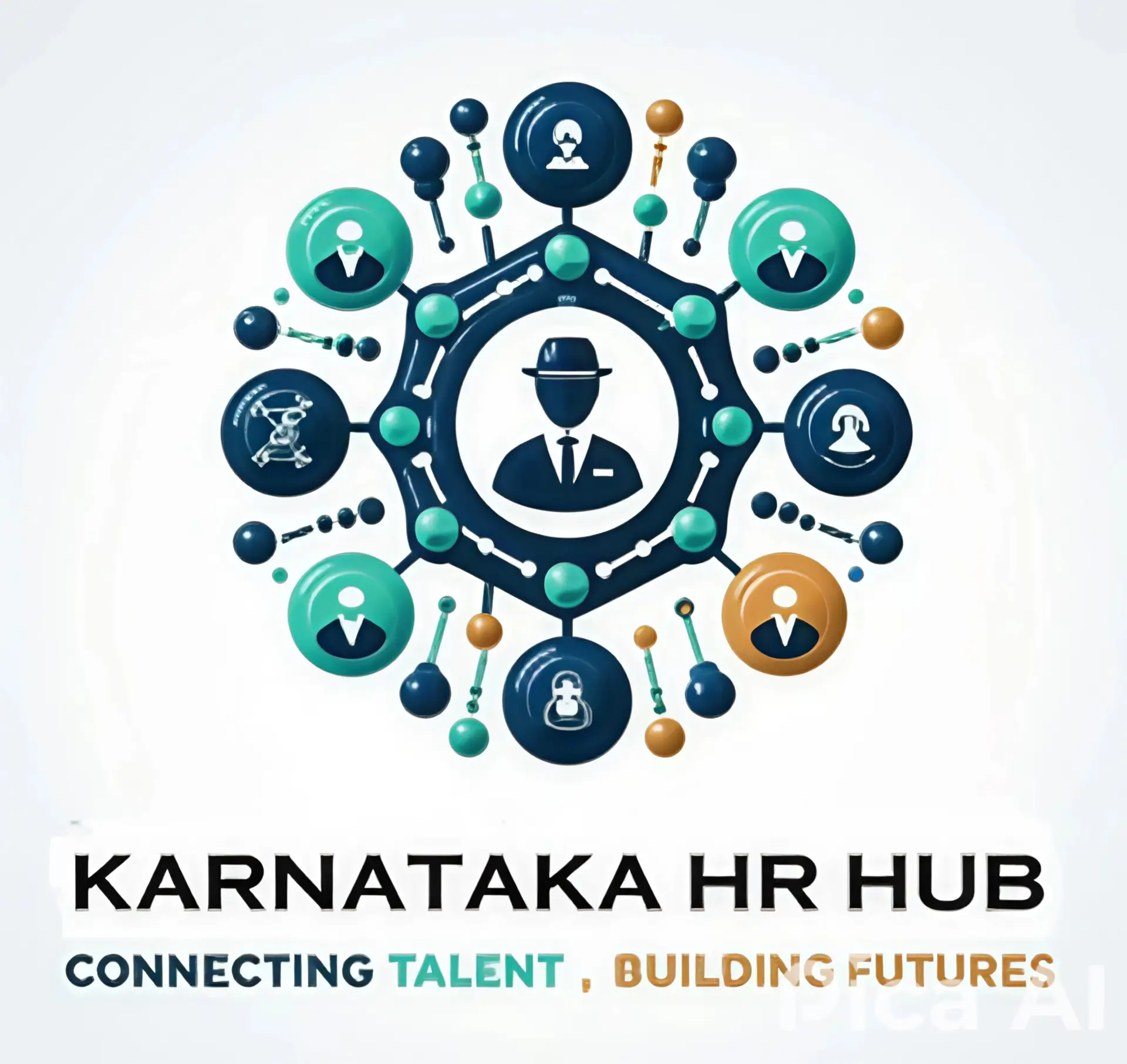Upskilling HR Professionals in India: A Practical Guide for Future-Ready Careers

Introduction: Why Upskilling Is the Need of the Hour for Indian HR Professionals
In the early 2000s, most HR teams in India relied on paper-based resumes, manual attendance registers, and instinct-driven hiring. These methods worked fine when business environments were predictable.
But the world of work in 2025 is very different. Artificial intelligence, digital HR tools, hybrid workplaces, and a new generation of employees who value purpose over pay have changed everything.
Today, HR professionals in India—from IT parks in Bengaluru to factories in Pune and startups in Gurugram—must upgrade their skills to stay relevant. According to the 2022 AIHR Report, 69% of employers globally struggle to fill key roles because of skill shortages. The 2024 SHRM India study found that 75% of organizations now make upskilling a top business priority.
This guide is designed to help HR professionals in India move from old-style processes to future-ready capabilities. It brings together research insights from SHRM, Deloitte, and Harvard Business Review, along with practical case examples from Indian companies.
Recommended read: The Ultimate Guide to Personality Tests
The Changing HR Landscape in India
Why Upskilling HR Professionals in India Has Become Essential
India’s HR professionals are managing more complex challenges than ever before—remote teams, employee well-being, AI-driven hiring, and stricter labor laws. Yet many still rely on outdated tools like annual performance reviews, manual payroll systems, or one-size-fits-all training workshops.
A few data points highlight the urgency:
NASSCOM 2024 predicts a 1.5 million skill gap in India’s technology workforce.
Deloitte 2024 Human Capital Trends reports that 64% of Indian Millennials want employers with strong values and growth opportunities.
LinkedIn’s Workforce Report (2024) reveals 70% of Gen Z workers in India prioritize learning and well-being over salaries.
Clearly, the HR function must evolve. Old practices from the 1990s—like subjective performance appraisals and rigid office monitoring—no longer meet employee expectations or business realities.
Read Also: AI vs. HR Managers in India: Automation, Empathy, and the Future of HR
What’s Driving the HR Skills Transformation
1. Talent Scarcity
The Great Resignation affected India deeply. Nearly 40% of employees were considering job switches (AIHR, 2023). Traditional job fairs and recruitment ads are no longer effective. HR must now learn data-driven talent acquisition, AI screening tools, and employer branding strategies.
2. Rise of Hybrid Work
About 62.8% of HR leaders prefer hybrid models (AIHR, 2024). Managing hybrid teams requires new capabilities—digital collaboration, productivity tracking, and mental well-being initiatives—far beyond conventional supervision methods.
3. Changing Employee Priorities
Gen Z and Millennial workers expect career growth, recognition, and flexible work. HR professionals must be skilled in employee experience design, engagement analytics, and personalized learning.
4. Regulatory Changes
India’s new Labour Codes have made compliance more technology driven. HR leaders must now adopt HRMS software, maintain digital registers, and track statutory reports online—a shift from paper-based files to smart dashboards.
Read: HR Analytics in India: Tools, Trends & Insights for Talent Strategy
Key Competencies for Upskilling HR Professionals in India
1. Data Literacy
HR decisions today must be guided by numbers, not just intuition.
Only 41% of HR professionals globally are comfortable with analytics (AIHR). Tools like Power BI, Tableau, or PeopleStrong analytics can transform how HR tracks turnover, hiring time, and training ROI.
Example:
IBM used predictive analytics to reduce attrition by 20%, saving millions (Harvard Business Review, 2023).
Similarly, an HR team in Bengaluru’s manufacturing unit used data dashboards to identify absenteeism trends, enabling targeted engagement drives that cut absenteeism by 12% in three months.
2. Business Acumen
HR must understand business goals, not just compliance.
When HR aligns learning programs with company strategy, it drives measurable outcomes.
Example:
At Hindustan Unilever, linking learning goals to sales targets improved team performance by 12% (Forbes India, 2022).
In my HR consulting experience, a mid-sized automotive plant in Dharwad achieved faster line productivity by aligning HR training schedules with production cycles—showing how HR can directly impact profits.
3. Digital Proficiency
Automation and AI tools are now core to HR operations.
A 2024 Gartner report found that 70% of HR leaders prioritize digital adoption.
Instead of manual spreadsheets, platforms like Zoho People, Keka HR, and SAP SuccessFactors can streamline payroll, onboarding, and attendance.
Case Example:
Infosys introduced AI tools for recruitment that cut hiring time by 15% (SHRM India, 2024).
Even small companies can replicate this by integrating resume-parsing software or chatbots for initial candidate screening.
4. People Advocacy
Empathy, inclusion, and well-being have become business essentials.
A culture of trust and support boosts retention. According to AIHR, 63.8% of HR professionals now view people advocacy as their top skill.
Example:
TCS introduced employee well-being and counseling programs that improved engagement by 10% (SHRM, 2024).
At one client site I managed, introducing peer-mentorship circles led to visible improvements in morale, especially among frontline workers.
Read: Top 15 HR Metrics in India for 2025
How to Build an Effective Upskilling Program for HR Teams
1. Identify Skill Gaps
Start by analyzing where your HR team stands today.
Use SHRM’s Competency Model or quick digital skills surveys to map current versus future needs.
Example:
Accenture India discovered a 30% skills gap in analytics through a digital audit. After targeted training, its HR team reported a measurable improvement in recruitment efficiency (HBR, 2022).
2. Set Measurable Goals
Avoid vague objectives like “improve leadership skills.” Instead, define specific learning outcomes.
For instance:
“Complete Coursera’s HR Analytics specialization this quarter.”
When goals are clear, learning becomes focused and impactful.
3. Blend Learning Formats
A mix of online and in-person sessions works best.
According to SHRM (2024), 43% of learners still prefer face-to-face learning.
Use a hybrid model—combining digital courses with workshops or coaching.
Example:
Infosys blended e-learning with classroom programs to upskill 10,000 employees in AI, leading to higher innovation (Forbes, 2023).
4. Measure Learning Outcomes
Don’t stop at attendance sheets. Use before-and-after metrics to track improvement.
Example:
Wipro measured recruitment cycle time before and after launching an HR analytics course. The initiative improved efficiency by 18% (SHRM, 2024).
5. Keep Programs Dynamic
Regular feedback helps keep learning relevant.
HCL Technologies replaced one-day workshops with six-month digital programs, increasing satisfaction by 12% (HCL Case Study, 2023).
Mini Case Study:
A Gurugram startup noticed low completion in its learning portal. By converting long webinars into 10-minute mobile modules, completion rates jumped from 40% to 88%.
Read: Top 12 HR Trends in India 2025: Shaping Workplace Culture
Leveraging Technology to Upskill HR Professionals in India
1. Learning Management Systems (LMS)
Platforms like TalentLMS, Docebo, and Zoho Learn deliver customized, trackable courses.
Reliance Industries used an LMS to train 5,000 HR staff, saving 35 hours per week (People Matters, 2023).
Tip: Start small—upload your existing training slides and record short 5-minute sessions to build your own HR knowledge base.
2. AI-Powered HR Analytics
AI tools can predict workforce risks or training gaps.
Credit Suisse saved $70 million by using predictive analytics to identify high-risk roles (AIHR, 2022).
In India, companies are adopting tools like Darwinbox and SAP SuccessFactors to gain data-driven HR insights.
3. Virtual Reality (VR) Learning
VR is emerging in HR learning for soft skills and onboarding.
ICICI Bank used VR to train employees on conflict resolution and saw a 15% performance improvement (SHRM, 2024).
4. Microlearning Platforms
Short, bite-sized learning modules suit India’s busy workforce.
Adobe India’s microlearning initiative achieved 25% higher completion than traditional e-learning (Forbes, 2024).
Example:
Tech Mahindra implemented an AI-based LMS for HR teams, cutting recruitment time by 22% (Tech Mahindra Report, 2023).
Overcoming Barriers to HR Upskilling in India
1. Lack of Time
Many HR professionals cite time as the biggest challenge.
Microlearning (5–10 minute modules) helps solve this issue. Even short sessions, when consistent, drive long-term improvement.
Example:
A Bengaluru IT firm introduced a “10-minute daily learn” challenge and achieved 85% course completion in 60 days.
2. Irrelevant Content
Generic content doesn’t connect with Indian HR needs.
Partner with NIIT, UpGrad, or Coursera to customize HR-specific courses. Deloitte’s customized L&D program improved participation by 30% (Deloitte, 2023).
3. Low Engagement
Gamified learning—using leaderboards, points, or quizzes—can boost motivation.
PwC India added gamification to a data literacy course, increasing participation by 20% (PwC, 2023).
4. Budget Constraints
Not every company can afford costly training.
Free tools like edX, Coursera, YouTube Learning, or HR-specific webinars can be effective if used regularly.
TCS used free online courses to upskill 5,000 HR professionals in 2023 (SHRM India, 2024).
Read: Actionable Strategies for Tech-Driven HR Growth in 2025
Aligning HR Upskilling with Business Goals
1. Align with Strategy
Upskilling must directly support business goals like automation, customer retention, or digital transformation.
Infosys linked its HR learning strategy with AI innovation, training 15,000 employees and boosting performance (Forbes, 2023).
2. Track ROI
Measuring learning impact is vital. Move beyond “smile sheets” and focus on tangible metrics—employee productivity, retention, and cost savings.
Example:
A Dutch retailer recorded a 400% ROI on its HR training program (AIHR, 2023).
In India, Bajaj Finance trained its HR team on CRM tools, improving client retention by 9% (Bajaj Finance, 2023).
3. Engage Senior Leadership
Learning is most effective when CXOs lead by example.
TCS introduced CXO-led L&D programs that improved innovation by 10% (SHRM, 2024).
When HR training is visibly supported by management, employee participation multiplies.
4. Build for Scale
Design upskilling initiatives that can grow with the organization.
For example, Larsen & Toubro aligned HR development with automation goals, reducing operational costs by 8% (People Matters, 2023).
Mini Case Study:
At a mid-tier engineering firm in Pune, HR digitalized its compliance tracking using low-cost HRMS software. Within a year, they scaled it across 12 plants and reduced manual errors by 70%.
Read: India’s Top Work-Life Balance Initiatives 2025
Conclusion: The Future of HR Belongs to the Skilled
Upskilling HR professionals in India is no longer optional—it’s a career necessity. The rapid pace of automation, hybrid work, and employee expectations demands HR leaders who are tech-savvy, data-driven, and people-focused.
By mastering core competencies like analytics, digital tools, business understanding, and empathy, Indian HR professionals can become true business partners—not just administrators.
Action Steps You Can Start Today:
Pick one skill to learn this month—data analytics or AI in HR.
Enroll in a short course from SHRM, Coursera, or UpGrad.
Create a 30-day upskilling plan for your HR team.
Review progress every quarter and align learning goals with business outcomes.
Every small step you take towards learning will build your confidence, credibility, and career resilience.
The future of HR is human—but powered by skills.
What skill will you start with today? Share your thoughts and let’s build a community of future-ready HR professionals in India.
